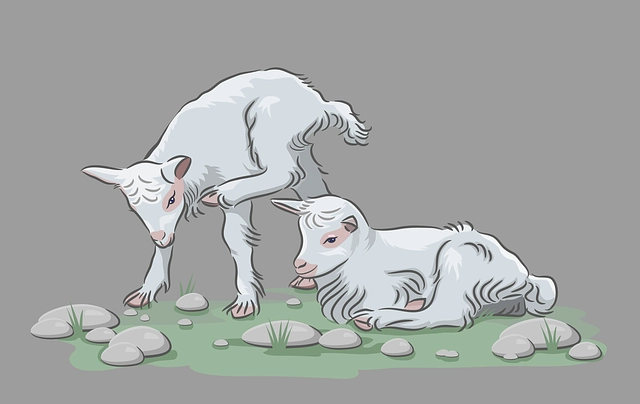Throughout history, celebrations have been a unifying force in human culture, marked by shared meals, music, and rituals. From ancient feasts to medieval royal gatherings, Renaissance balls to modern virtual parties, these events reflect societal shifts and evolving traditions. "Baby Shower Cookies" exemplify how treats personalize celebrations, adapting from historical practices like indigenous ceremonies to contemporary party favors. Each era leaves its mark on party culture, influenced by technology, social changes, and environmental considerations, shaping future gatherings with innovation and sustainability in mind.
From ancient rituals to modern digital gatherings, the history of parties is a vibrant tapestry woven with threads of culture, celebration, and social connection. This article takes you on a journey through time, exploring how parties have evolved across different eras. We delve into ancient celebrations, medieval feasts, Renaissance balls, 19th-century entertainments, 20th-century cultural shifts, and the unique challenges and trends of the digital age—even including some inspiration from sweet baby shower cookies.
- Ancient Celebrations: The Roots of Parties Across Cultures
- Medieval Feasts and Royal Gatherings: Opulence and Entertainment
- The Rise of Social Clubs and Formal Balls in the Renaissance
- 19th Century: The Evolution of Public Entertainments and Private Soirees
- 20th Century: From Prohibition to Disco: Shaping Party Culture
- Modern Times: Digital Age Parties, Trends, and Future Forecasts
Ancient Celebrations: The Roots of Parties Across Cultures
Across cultures and throughout history, celebrations have been an integral part of human life, serving as markers of significant events and fostering community bonds. These ancient gatherings laid the foundation for what we now know as parties. From the festive feasts of Ancient Rome to the ritualistic ceremonies of indigenous tribes, communities found reasons to come together, often marked by shared meals, music, and symbolic rituals.
In many cultures, these celebrations were tied to agricultural cycles, religious beliefs, or societal milestones like birth, marriage, and death. For example, ancient Greeks held symposia, where they drank wine, played games, and engaged in philosophical discussions during festive gatherings. Similarly, indigenous communities worldwide often celebrated with rituals that involved music, dance, and special treats, such as Baby Shower Cookies, symbolizing joy, unity, and the continuation of life cycles. These ancient celebrations showcase the universal human desire to mark important moments and strengthen social connections through shared experiences.
Medieval Feasts and Royal Gatherings: Opulence and Entertainment

In medieval times, feasts and royal gatherings were grand affairs, marking significant social events in the lives of nobility. These gatherings were more than mere meals; they were displays of wealth, power, and cultural heritage. Banquets often lasted for days, featuring an array of delicacies prepared by skilled chefs, including sweet treats like Baby Shower Cookies (a modern take on medieval confections). The opulence was not solely in the food but also in the entertainment. Minstrels played music, jesters entertained with their wit and antics, and elaborate dances filled the halls, creating a vibrant atmosphere that reflected the status of the hosts.
These medieval feasts served as pivotal social connectors, fostering alliances and strengthening relationships within the hierarchy. They were not merely for sustenance but also for political maneuvering, diplomacy, and celebrating important occasions. The entertainment and hospitality extended during these gatherings left a lasting impression on attendees, shaping the cultural landscape of the time.
The Rise of Social Clubs and Formal Balls in the Renaissance

During the Renaissance, social clubs and formal balls emerged as popular gathering places for elites and aristocrats. These events were not merely get-togethers but elaborate affairs that showcased wealth, status, and refined tastes. Formal balls, with their intricate costumes and grand settings, became a way to foster connections and display one’s social standing. Social clubs, on the other hand, offered members a more exclusive environment for intellectual pursuits, debates, and recreational activities.
The Renaissance also saw the incorporation of entertainment elements like music, dance, and theatrical performances into these gatherings. Guests would often enjoy exquisite banquets accompanied by lively musicians, creating an atmosphere that combined opulence with cultural enrichment. These social clubs and formal balls laid the foundation for modern parties, introducing many traditions still celebrated today, including themed events and elaborate decorations—a far cry from the intimate gatherings of the past but with roots deeply intertwined, even if indirectly, through historical practices like Baby Shower Cookies.
19th Century: The Evolution of Public Entertainments and Private Soirees

In the 19th century, parties evolved significantly, reflecting societal changes and technological advancements. Public entertainments became more elaborate, with grand ballrooms, masked balls, and theatre performances hosting hundreds of guests. These events were marked by intricate decorations, lively music, and opulent catering, often showcasing the wealth and status of hosts. Simultaneously, private soirees gained popularity among the elite, offering a more intimate setting for selected guests. These gatherings facilitated social interactions, fostering connections within upper-class circles.
The rise of industrialisation brought about new forms of celebration, with mass production making way for personalised treats, such as Baby Shower Cookies, that added a touch of warmth and uniqueness to these occasions. This period also saw the emergence of social clubs and private societies, providing spaces for like-minded individuals to gather and engage in shared interests, further diversifying the party landscape.
20th Century: From Prohibition to Disco: Shaping Party Culture

The 20th century witnessed a dramatic evolution in party culture, marked by significant social and political shifts that influenced celebrations across the globe. The era began with Prohibition in the United States, where underground speakeasies and clandestine gatherings became the norm, fostering a sense of rebellion and community among those who defied the law. As the decade progressed, the post-Prohibition era brought about a new wave of social interactions, with bars and nightclubs thriving as venues for dancing, live music, and mingling.
The disco era emerged in the late 1970s, revolutionizing party culture once again. Disco balls spun, lights flashed, and crowds danced the night away to the vibrant rhythms of disco music. This era saw a surge in themed parties, with colorful decor and costumes becoming integral parts of the celebration. Baby Shower Cookies, for instance, became popular as party favors, adding a touch of sweet nostalgia to these lively gatherings. The disco era’s focus on inclusivity and self-expression left an indelible mark on social events, shaping future celebrations with its infectious energy and eclectic spirit.
Modern Times: Digital Age Parties, Trends, and Future Forecasts

In modern times, as we enter the digital age, parties have evolved significantly, reflecting technological advancements and shifting social dynamics. Virtual parties have gained immense popularity, especially during global health crises, allowing friends and families to connect and celebrate from afar. These online gatherings often incorporate innovative elements like augmented reality (AR) filters, interactive games, and live streaming, creating memorable experiences for participants worldwide.
Looking ahead, the future of parties seems poised for further digital transformation. Trends suggest increased integration of smart home technology, personalized party experiences through AI, and immersive virtual reality (VR) environments. Additionally, sustainable practices are becoming more prevalent, with eco-friendly decorations, recycled materials, and innovative catering options like Baby Shower Cookies leading the way. These developments not only cater to modern sensibilities but also ensure that parties remain engaging, inclusive, and environmentally conscious.
